13 Sourdough Bread Recipes For Home Bakers
This post may contain affiliate links. Please read my disclosure policy.
Your sourdough starter is active and bubbly, and you’re ready to bake! These 10 sourdough bread recipes are a wonderful place to begin, yielding delicious loaves. Here you’ll find everything from my Everyday Sourdough to a unique Dill Pickle Sourdough, Spelt Sourdough, and Toasted Walnut & Honey Sourdough Bread. Plus a recipe for Rustic Rye Sourdough at the bottom of this post!
What is a sourdough starter?
A sourdough starter is a mixture of flour (I use organic all-purpose) and filtered water that has captured and cultivated wild yeast and lactic acid bacteria from the environment. It is used to naturally leaven bread and other baked goods, giving them a distinctive sour flavor and helping them rise. Sourdough bread is known for its unique taste and texture, which is achieved through the fermentation of these microorganisms.
Even though I’ve been baking for quite some time, the magic of sourdough never gets old. The idea that beautiful homemade bread emerges from three simple ingredients: flour, water, and salt is fascinating.
As you get started, here are my favorite sourdough tools:
- Large Weck Jars for holding starter
- Digital Scale
- Bench Scraper
- Round Banneton
- Bread Lame
- Challenger Breadware Pan
In each recipe, I’ve included step-by-step instructions to guide you on your baking journey. If you’re new to baking sourdough, you might find my Sourdough Starter FAQ helpful.
If you’re a sourdough beginner, or you’re advanced baker, you’re sure to to find an artisan sourdough bread in this list that you’ll love. With each bake you’ll learn new things, and find a sourdough process that works best in your kitchen.
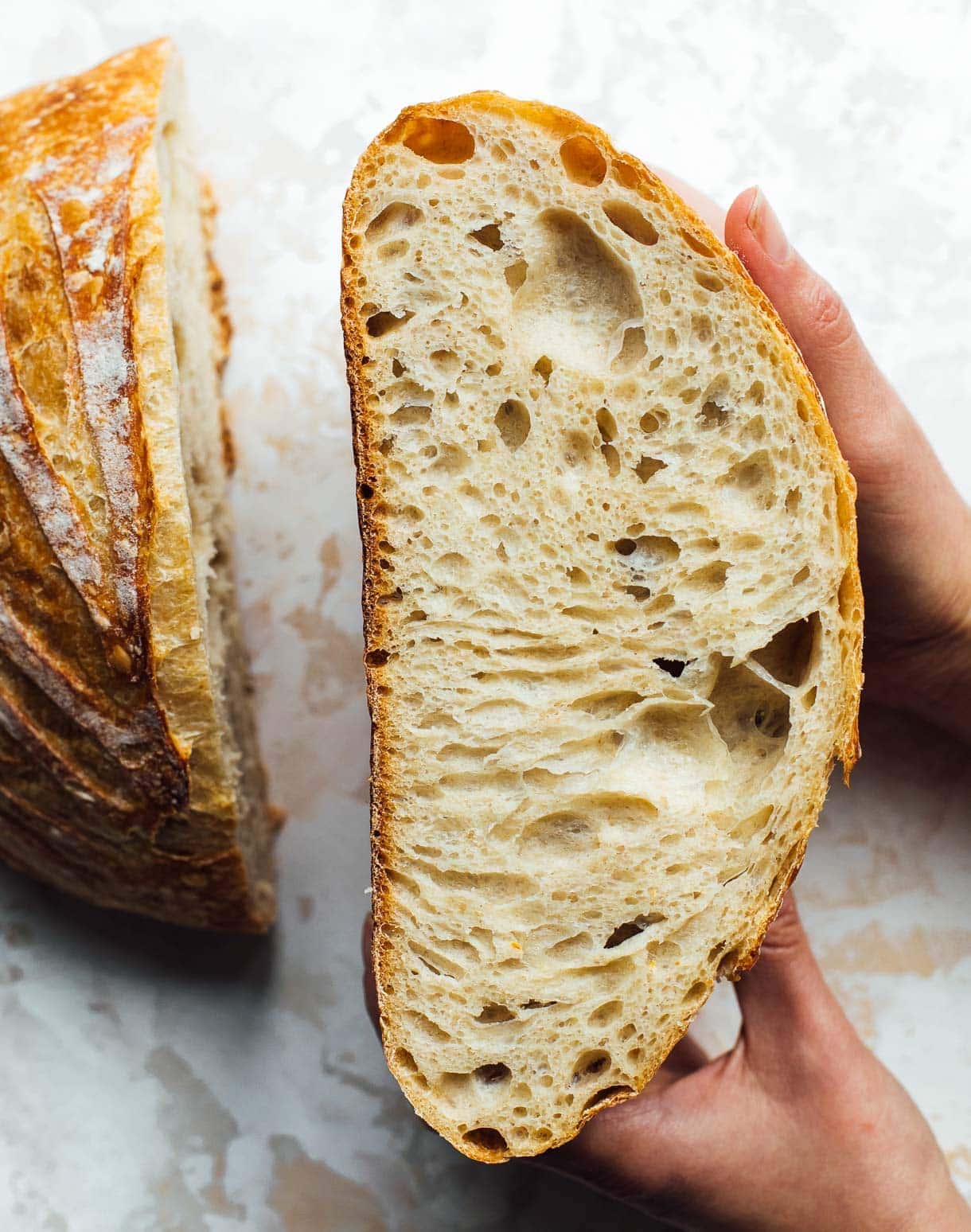
Delicious Everyday Sourdough Bread Recipe
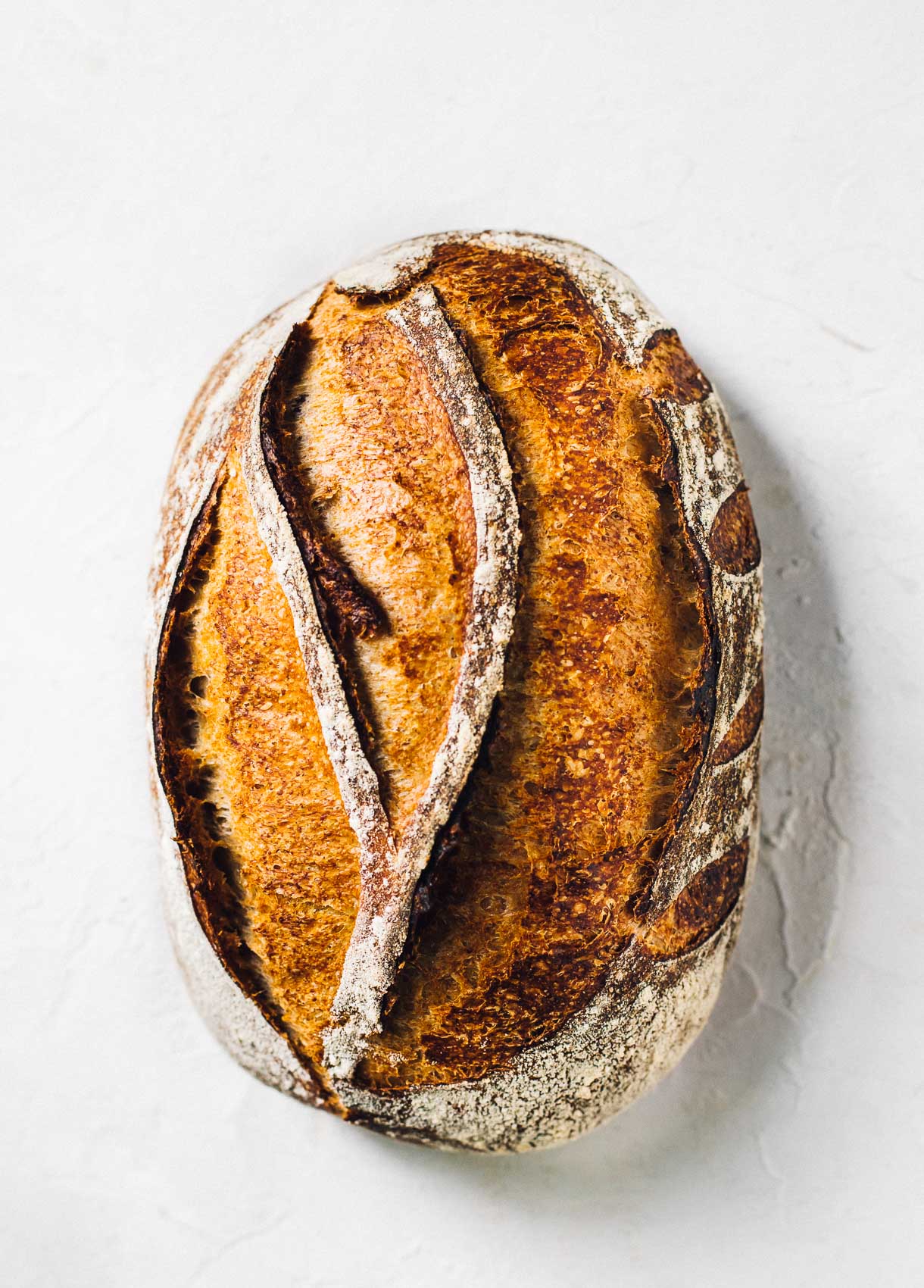
Rustic Rye Sourdough Bread
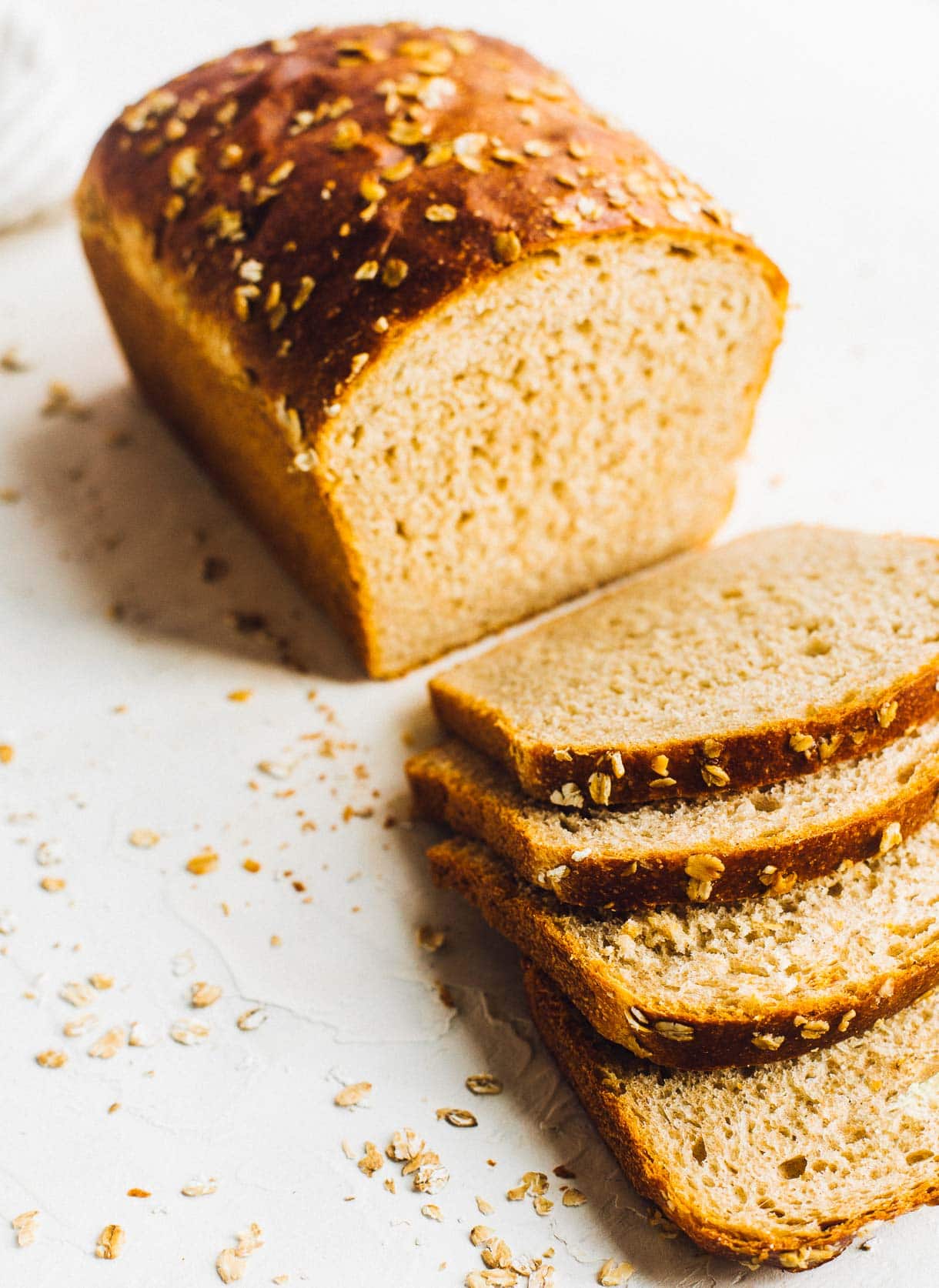
Easy Whole Wheat Sourdough Sandwich Bread
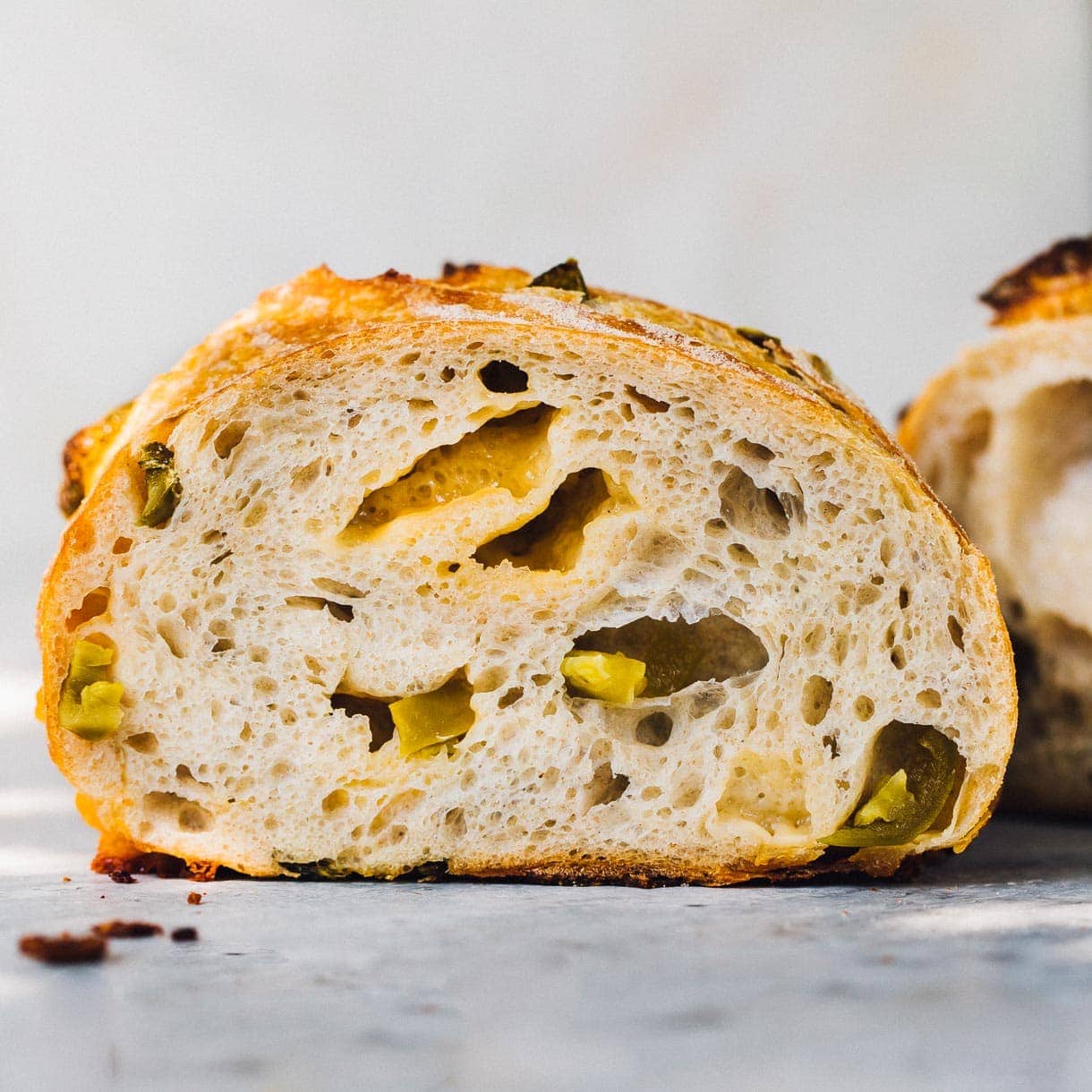
Top-Rated Jalapeño Cheddar Sourdough Bread
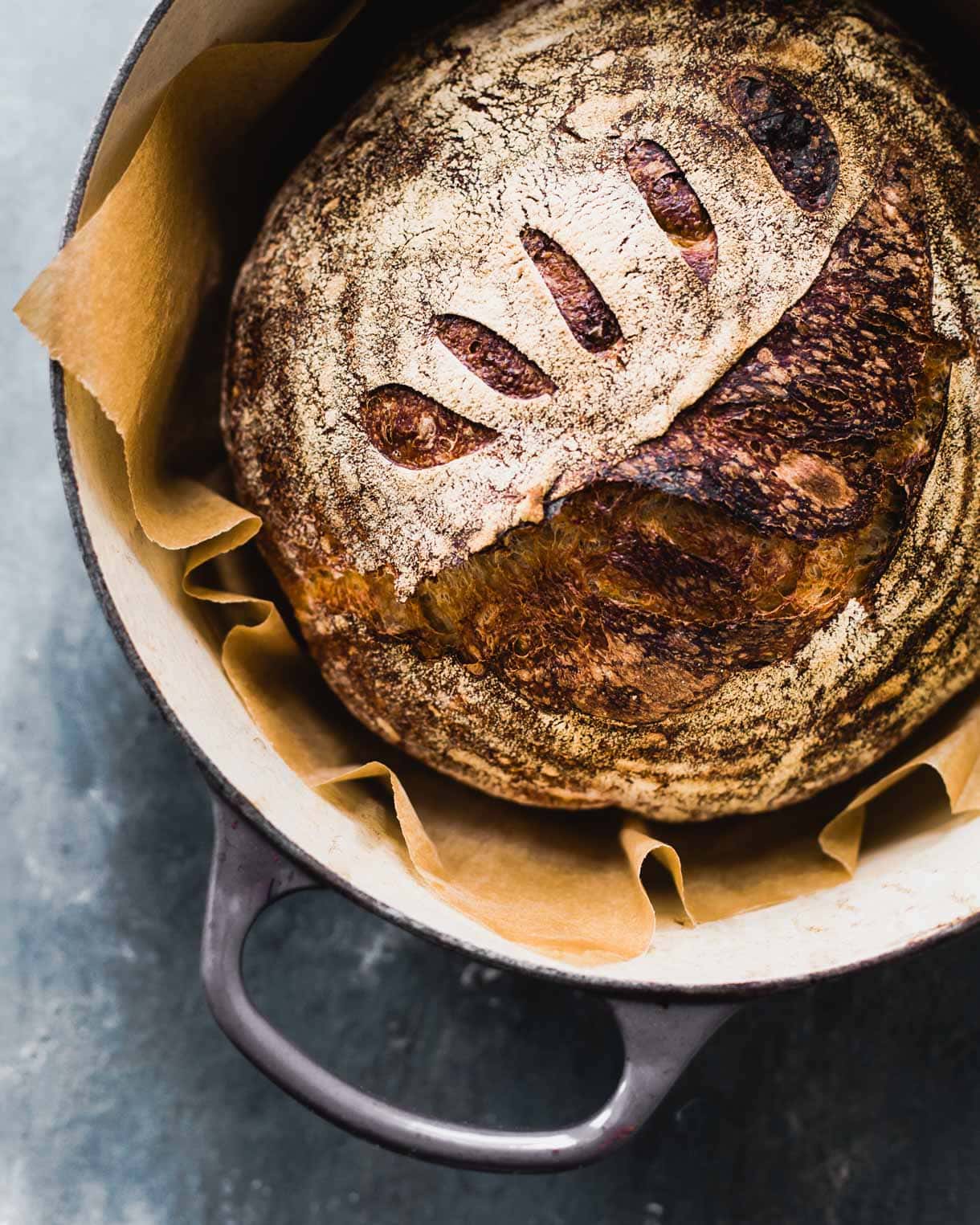
Homemade Whole Wheat Sourdough Bread (beginner friendly)
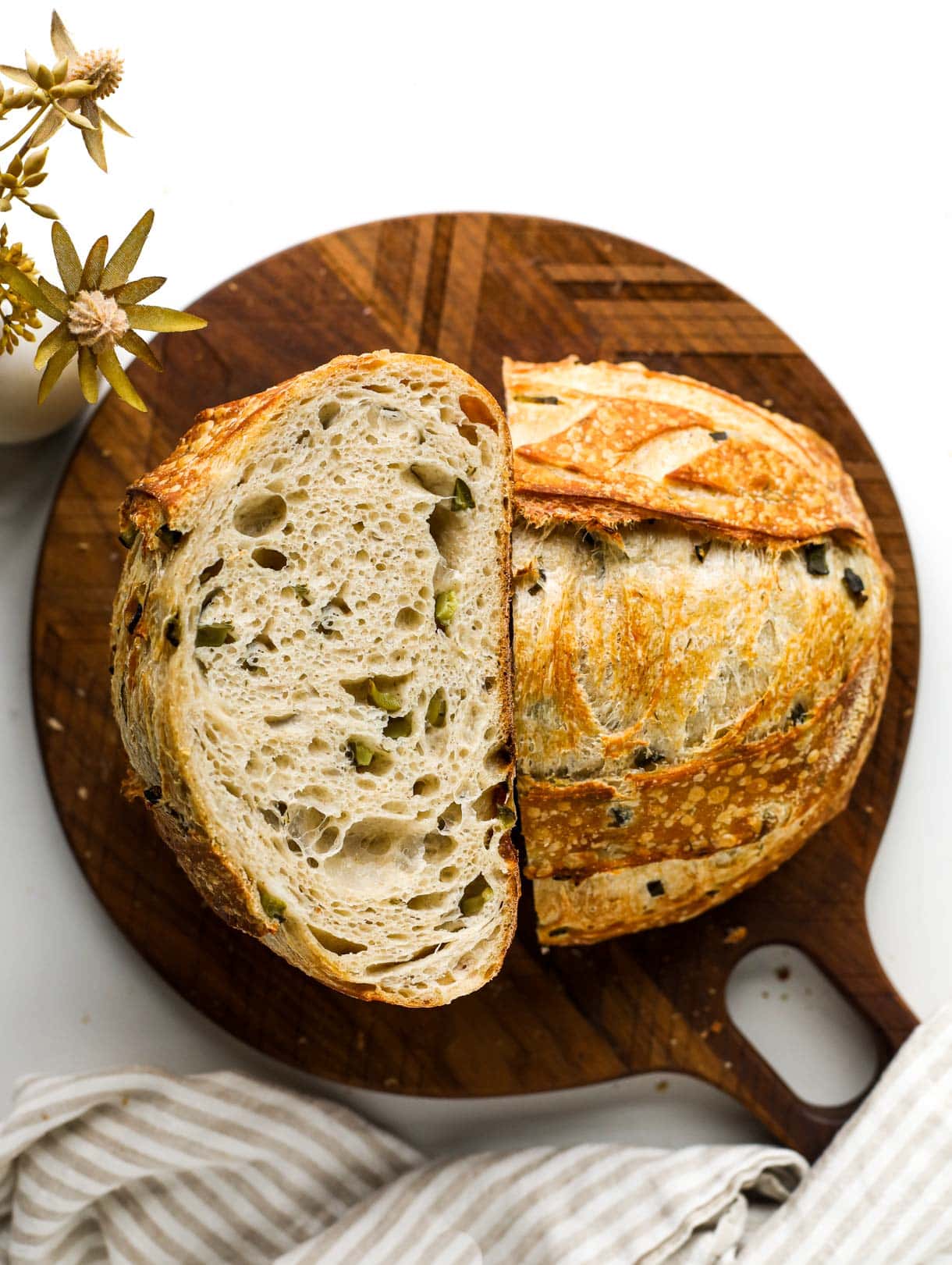
Dill Pickle Sourdough Bread
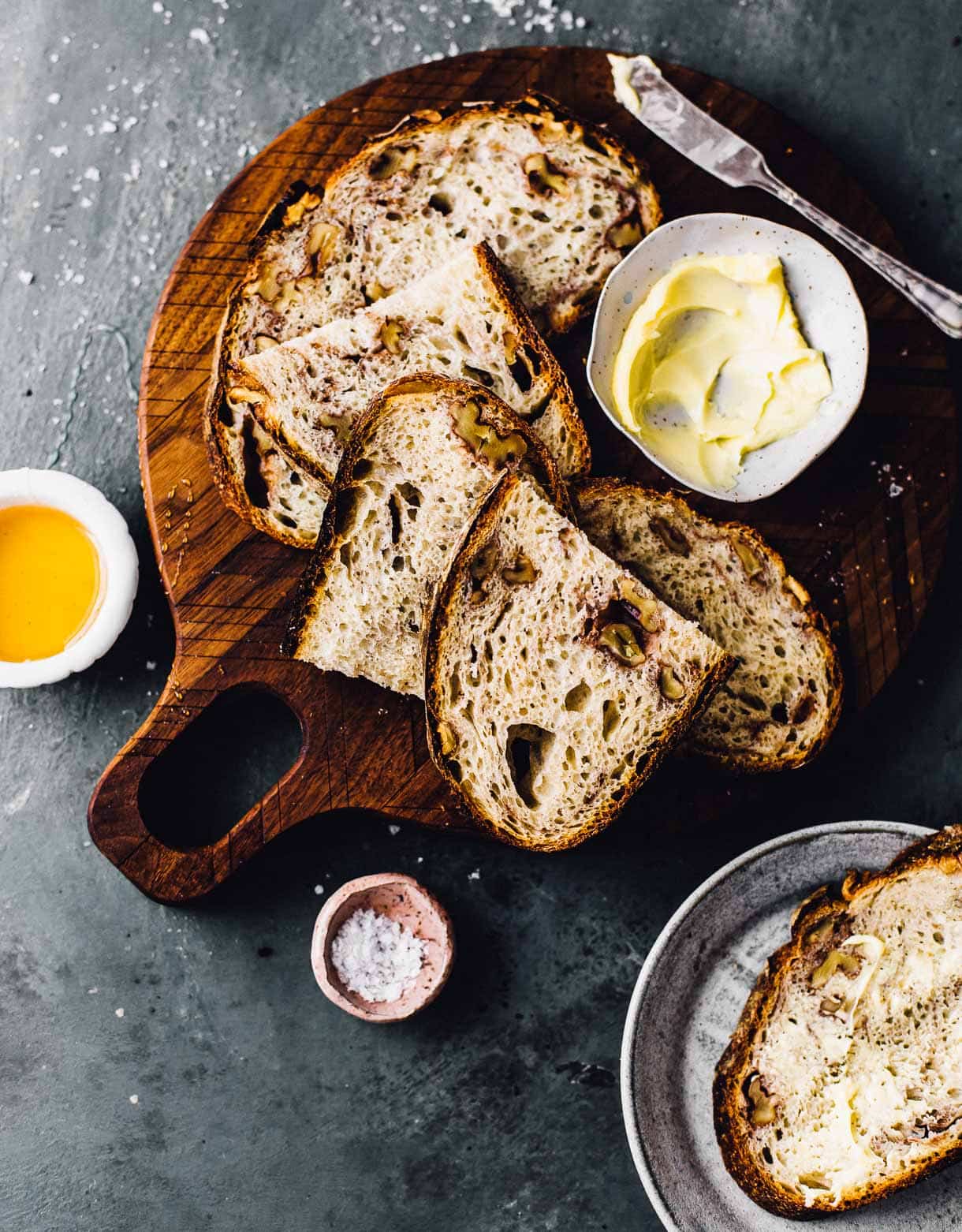
Toasted Walnut and Honey Sourdough Bread
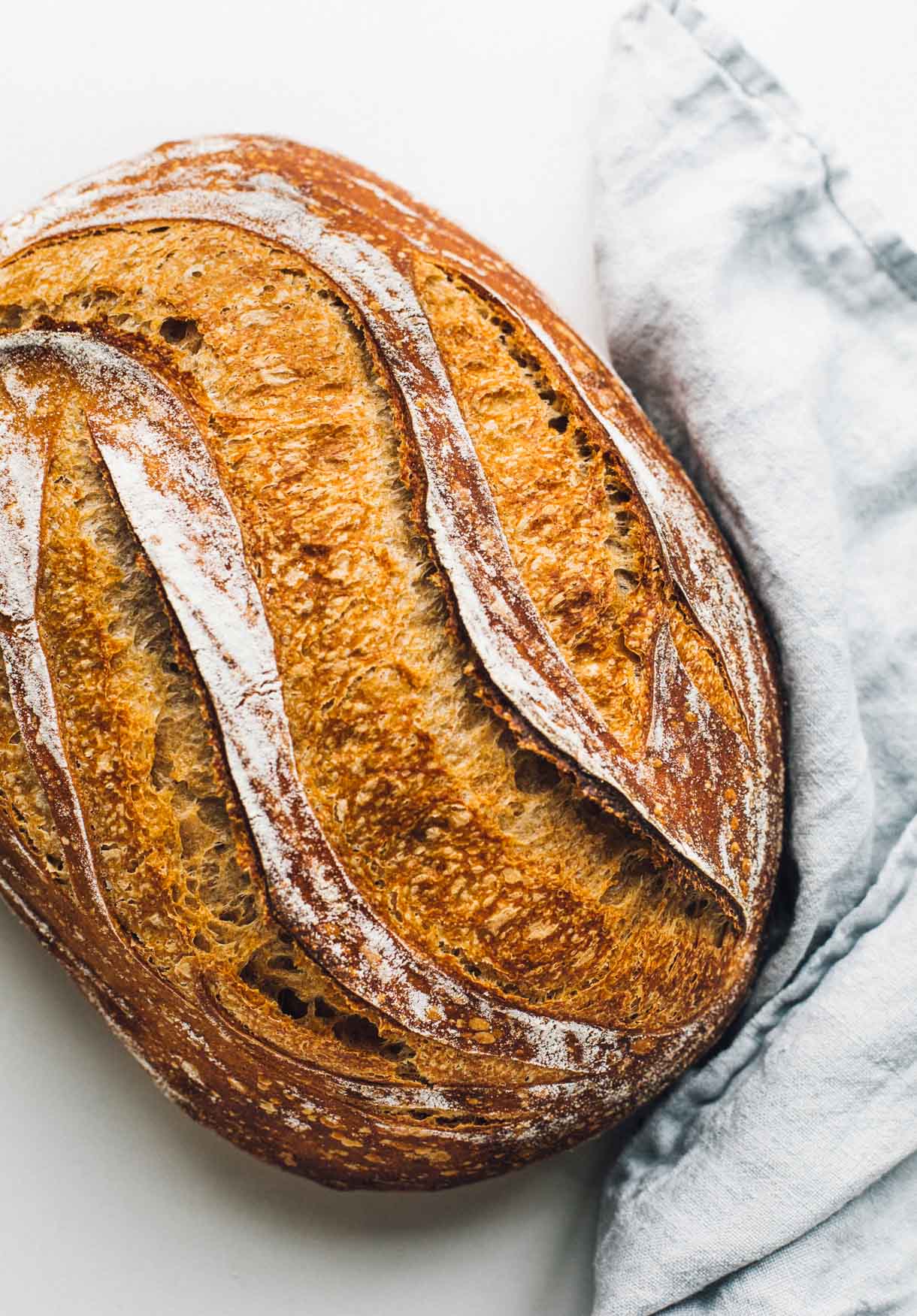
Simple Spelt Sourdough Bread

Easy Seeded Sourdough Bread Recipe
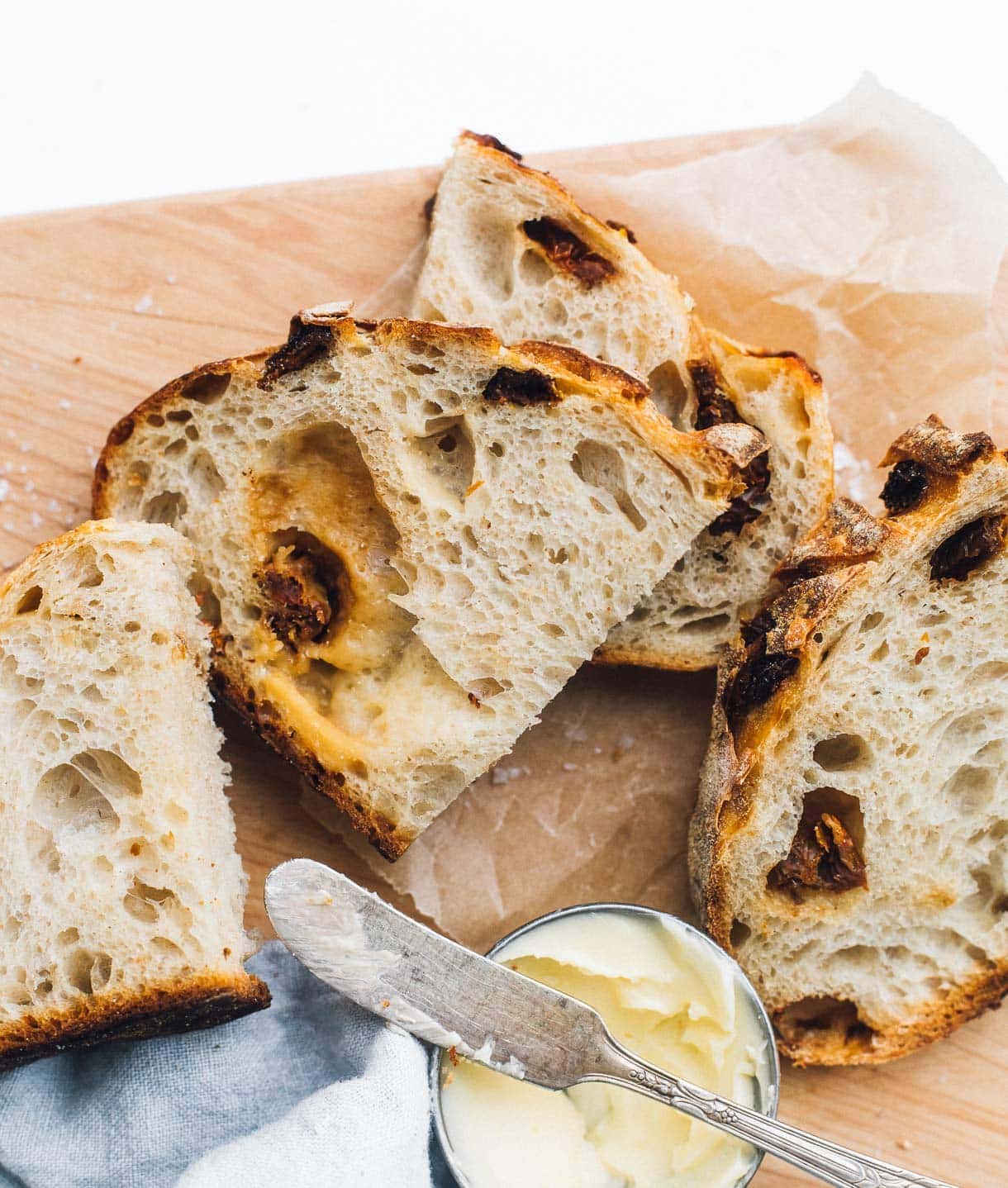
Sun-Dried Tomato & Cheddar Sourdough Bread
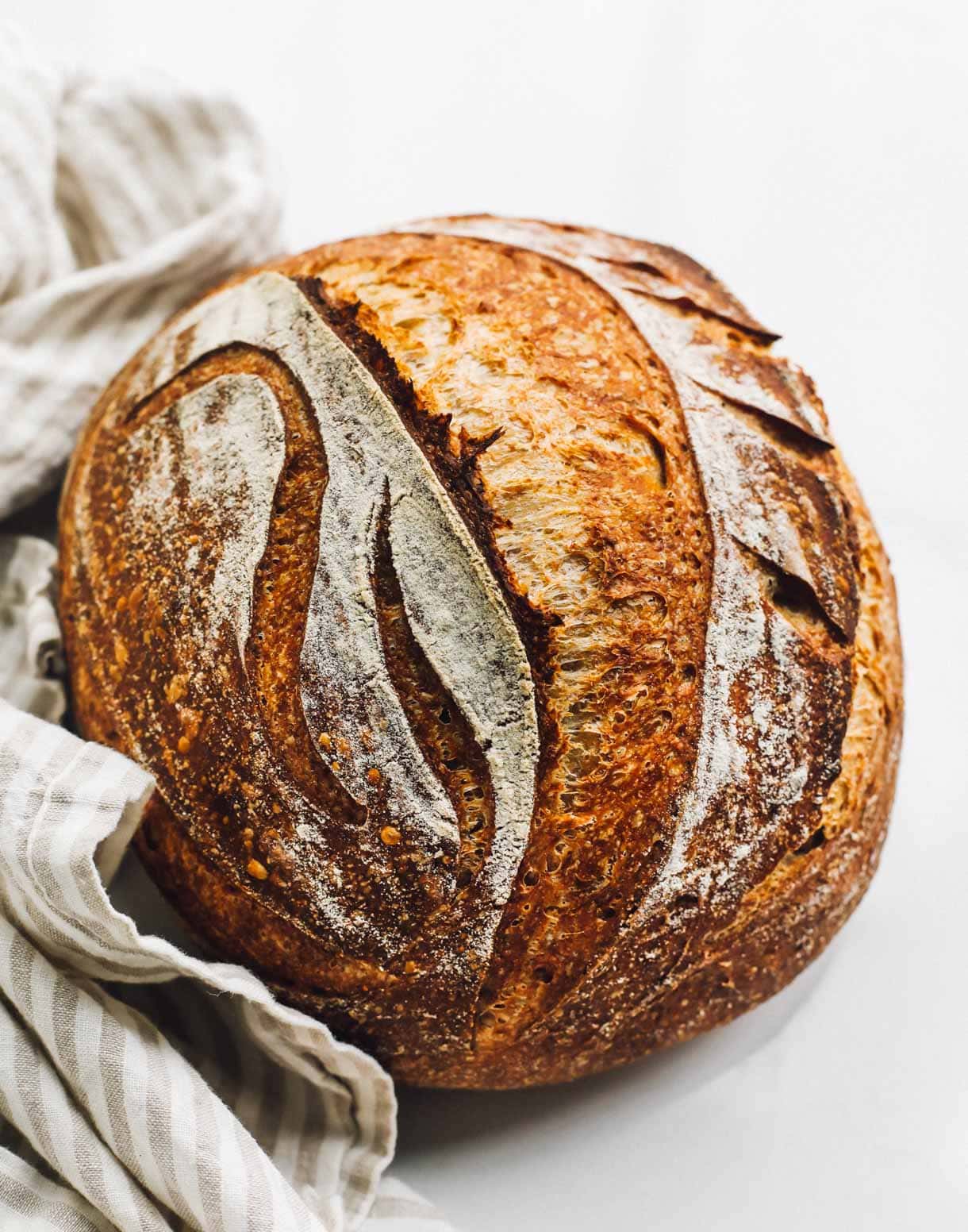
Whole Grain Sourdough Bread with Red Fife Flour
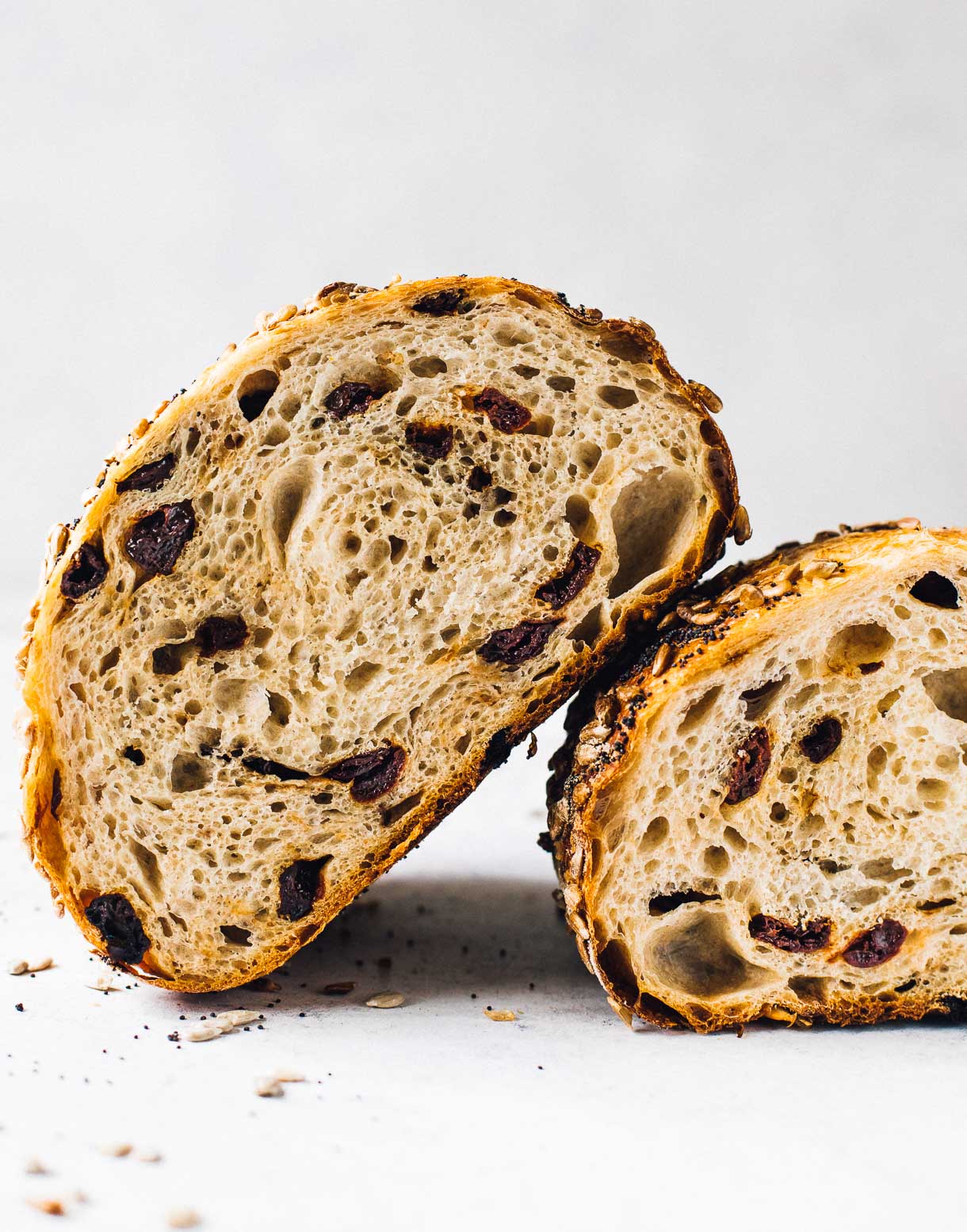
Tart Cherry Seeded Sourdough Bread
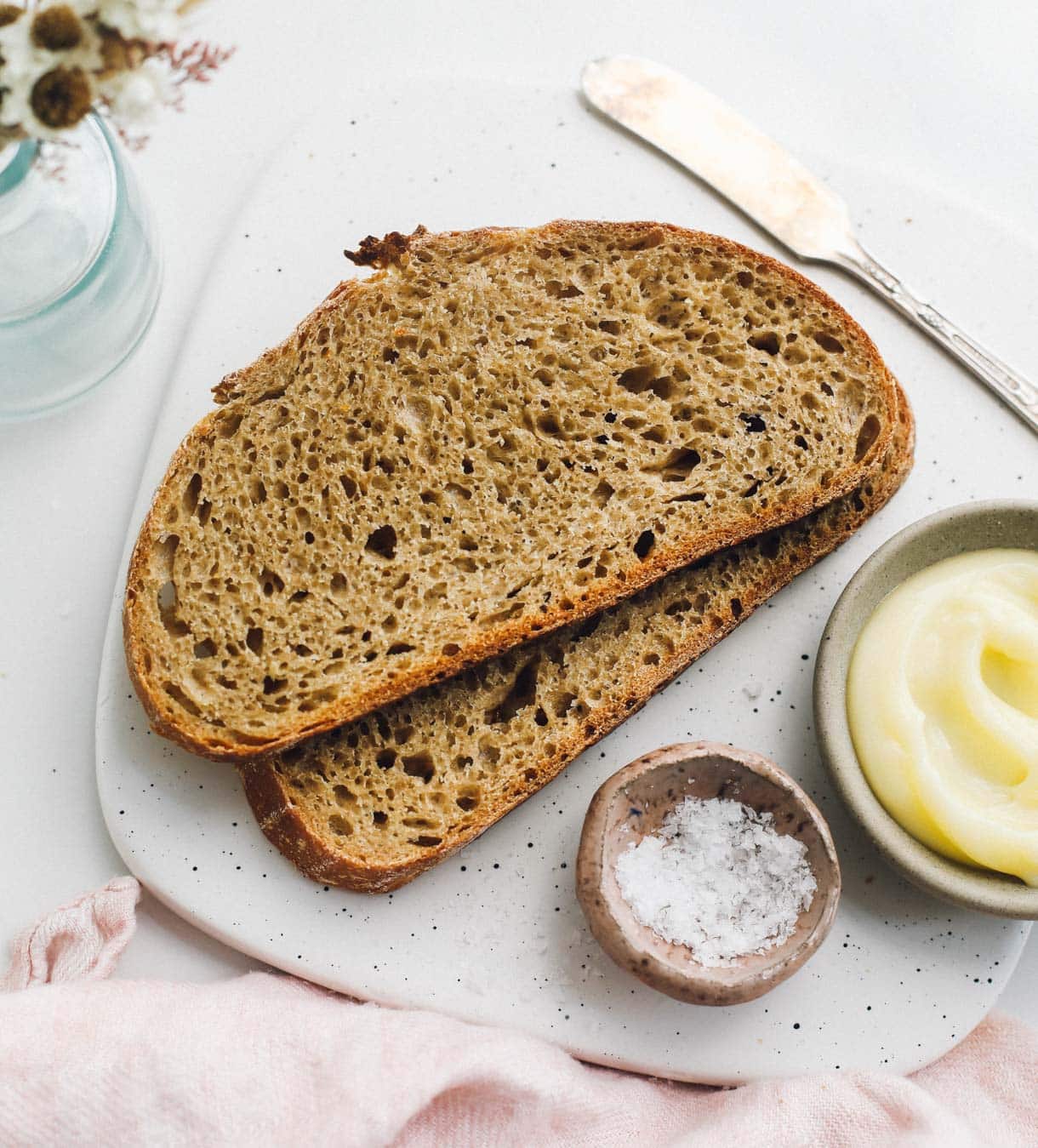
5-Ingredient Einkorn Sourdough Bread
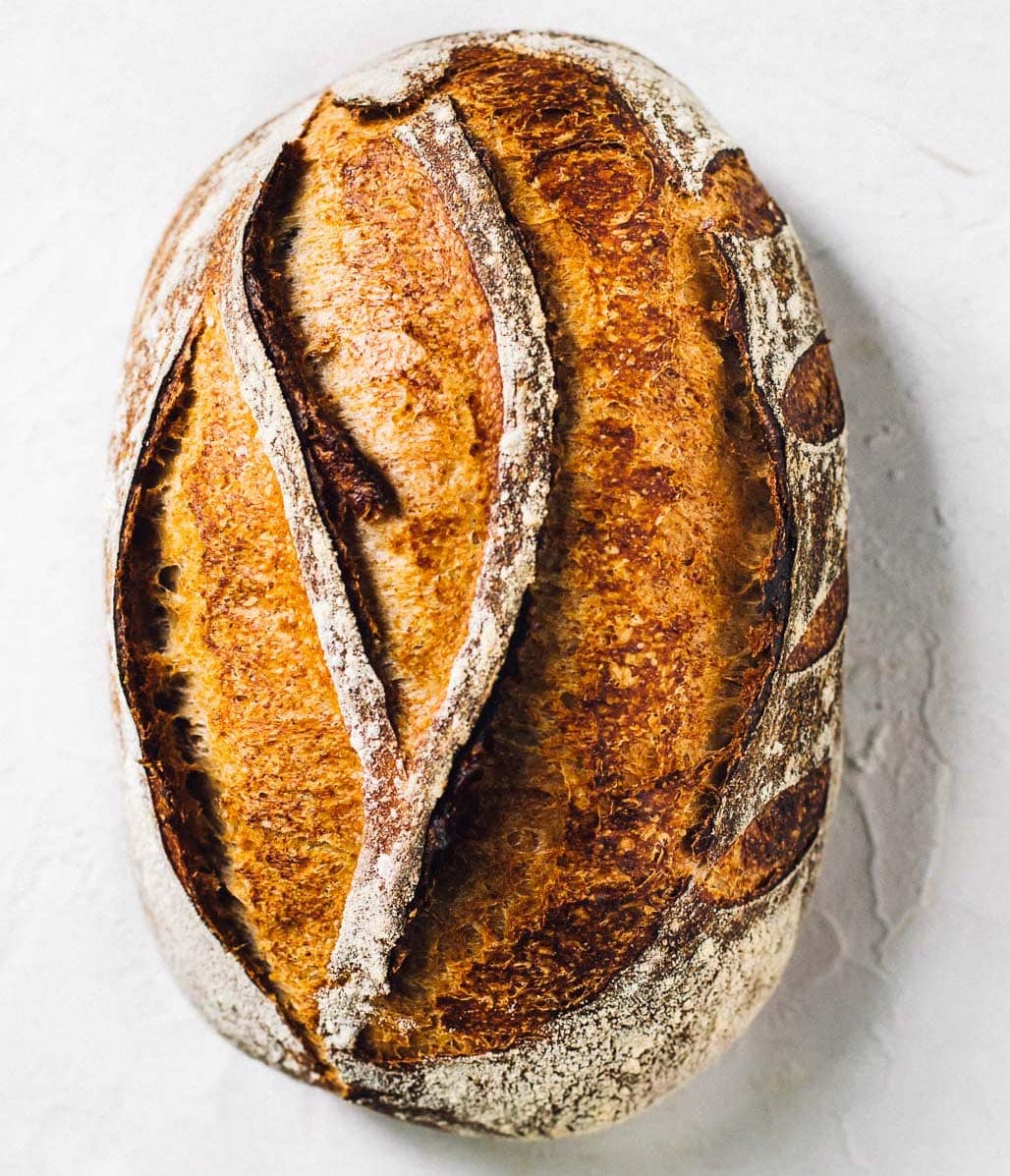
SCALE:
Ingredients
- 55 grams active sourdough starter
- 280 grams slightly warmer than room temperature water, about 80 degrees F
- 15 grams honey
- 100 grams fine rye flour
- 260 grams bread flour
- 40 grams whole wheat flour
- 7 grams fine salt
Instructions
- Before beginning, it will be helpful to watch these SHORT VIDEOS to see me make this bread so you see that the dough will be stickier than normal, but it will come together – you just have to trust!
- Add starter, water, and honey to a bowl. Whisk thoroughly until combined, with a fork. Add flours, and mix together first with the fork to start to incorporate, then with your hands until a shaggy dough is formed, and the bits of flour left just disappear. Sprinkle the salt on top and do not mix in, just leave it on top. Cover with a damp cloth.
- Autolyse: let dough sit for one hour, covered and undisturbed.
- Bulk ferment: Now you will knead the salt that is sitting on top, into the dough for about 1 min 15 seconds. There is no precise way to do this, just think of working the dough through your hands and up against the bowl, push and pull. You will start to feel the dough relax a bit around 1 minute. Continue for about 15 or 30 seconds more. Then leave the dough alone, covered, for 30 minutes. This counts as what would be your first set of stretch and folds.
- After those 30 minutes pass, perform a set of stretch and folds. Repeat 2 more times.
- Now you will let sit, undisturbed and covered with a damp cloth, for about 7ish hours at 70 degrees F. If the temperature in your home is above 70, this will take less time, vice versa. You will know it is finished with its bulk ferment when the dough has risen about double, is smooth and puffy on top, with a few bubbles. It will not be as jiggly as some sourdough you’ve made before.
- At this point, lightly dust your work surface with flour. Put dough onto the work surface, and pre-shape. This video will show you what that means. Let sit for 15 minutes on your work surface.
- Then shape your dough, using this method as a guide.
- Place dough into your flour dusted banneton, (or flour dusted linen lined banneton) seam side up. (Optional, you can wait 15 minutes after placing it in banneton, and pinch the perimeters of the dough into the center to hold the shape even more, called stitching.) The dough will now go through its final rise. You can do this on the counter, which will take about 2 hours at 70 degrees F for the dough to puff up and be jiggly. It will not quite double. OR you can do the final rise overnight in the refrigerator, with the banneton covered in a plastic bag or with a very damp cloth. You need this for holding moisture in.
- Time to bake. Preheat your oven to 500 degrees F, with your dutch oven preheating inside the oven. When the oven is preheated, flip your dough out gently onto parchment paper and score your dough. If you did the final rise in the refrigerator, take it straight from fridge to scoring. You should score it cold, and DO NOT need to let it come to room temp.
- Then put dough into the dutch oven on the parchment, and put cover on. Turn oven down to 450 degrees F and slide dutch oven in. Bake for 20 minutes, then remove cover.
- Turn heat down to 430 degrees F, and bake for 25 more minutes, until crust is golden brown and crackly. Remove from oven, and remove bread from dutch oven and place onto a cooling rack.
- Wait AT LEAST one hour to cool otherwise, the interior will be gummy.
Did you make this?
tag @heartbeetkitchen on instagram and hashtag it #heartbeetkitchen

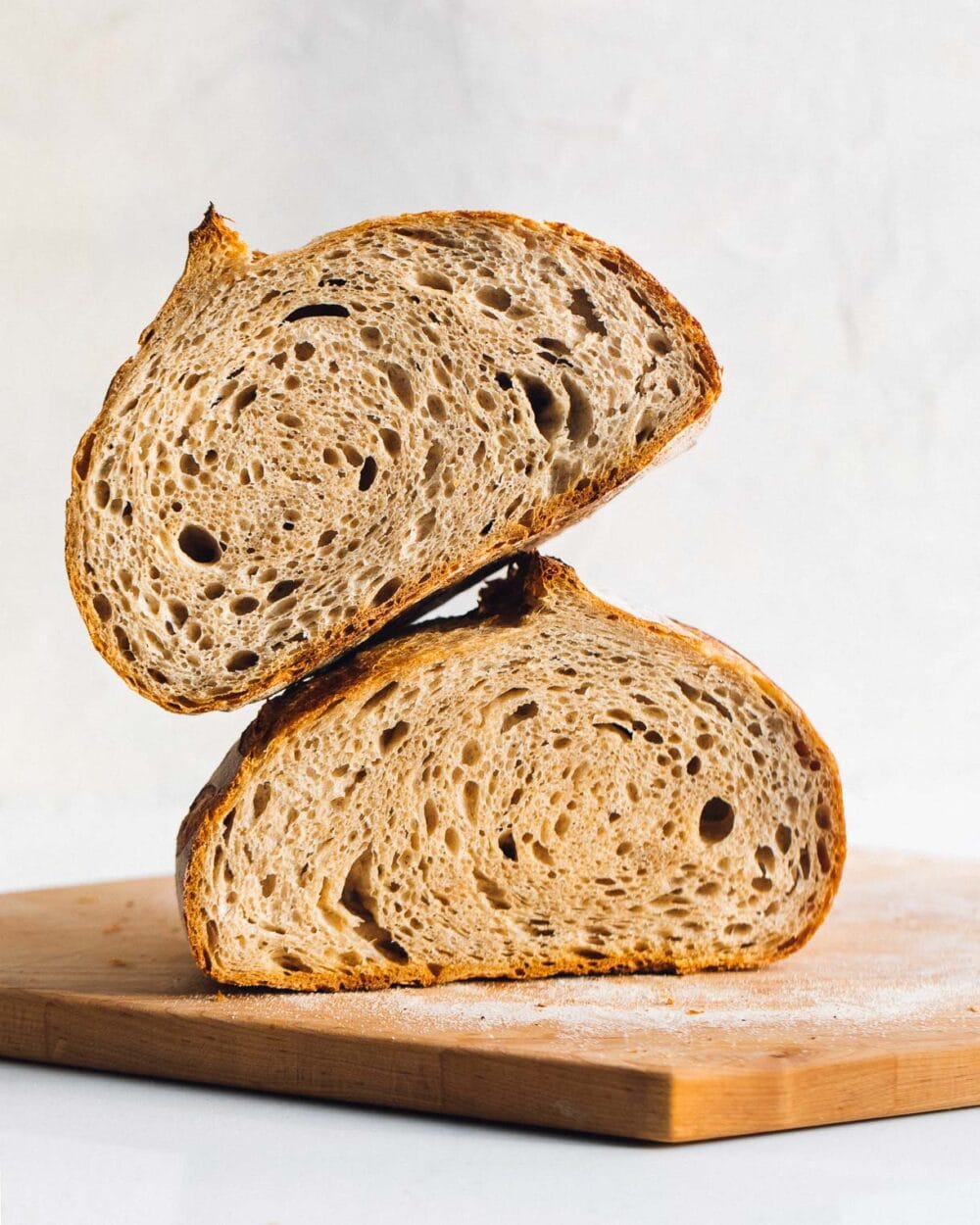

Lisa Ling
August 27, 2021
The rustic rye sourdough is my all time go too favourite sourdough I make regularly.
I also alternate between your whole-wheat sourdough too.
Please keep developing new sourdough bread recipes!!
Love your recipes as they’re easy to follow & your website is very informative & attractive with its pictures.
Amanda Paa
August 27, 2021
Thank you so much, Lisa! I plan on developing more sourdough recipes this fall and winter, as it is finally cool enough to bake again!
Rebecca Tofte
January 1, 2021
Thanks for getting back to me, Amanda. I have a 4.5 qt and a 7.25. I probably should get a 5.5 qt?
Amanda Paa
January 1, 2021
The larger one will work well and can take the place of the 5.5 qt! Just know it will be a little heavy for lifting.
Rebecca Tofte
January 1, 2021
What size dutch oven works for most sourdough recipes?
Amanda Paa
January 1, 2021
Hi Rebecca! A 5.5 quart dutch oven will work for most sourdough bread recipes. You can find a lot of dutch oven options depending on your price range, here.